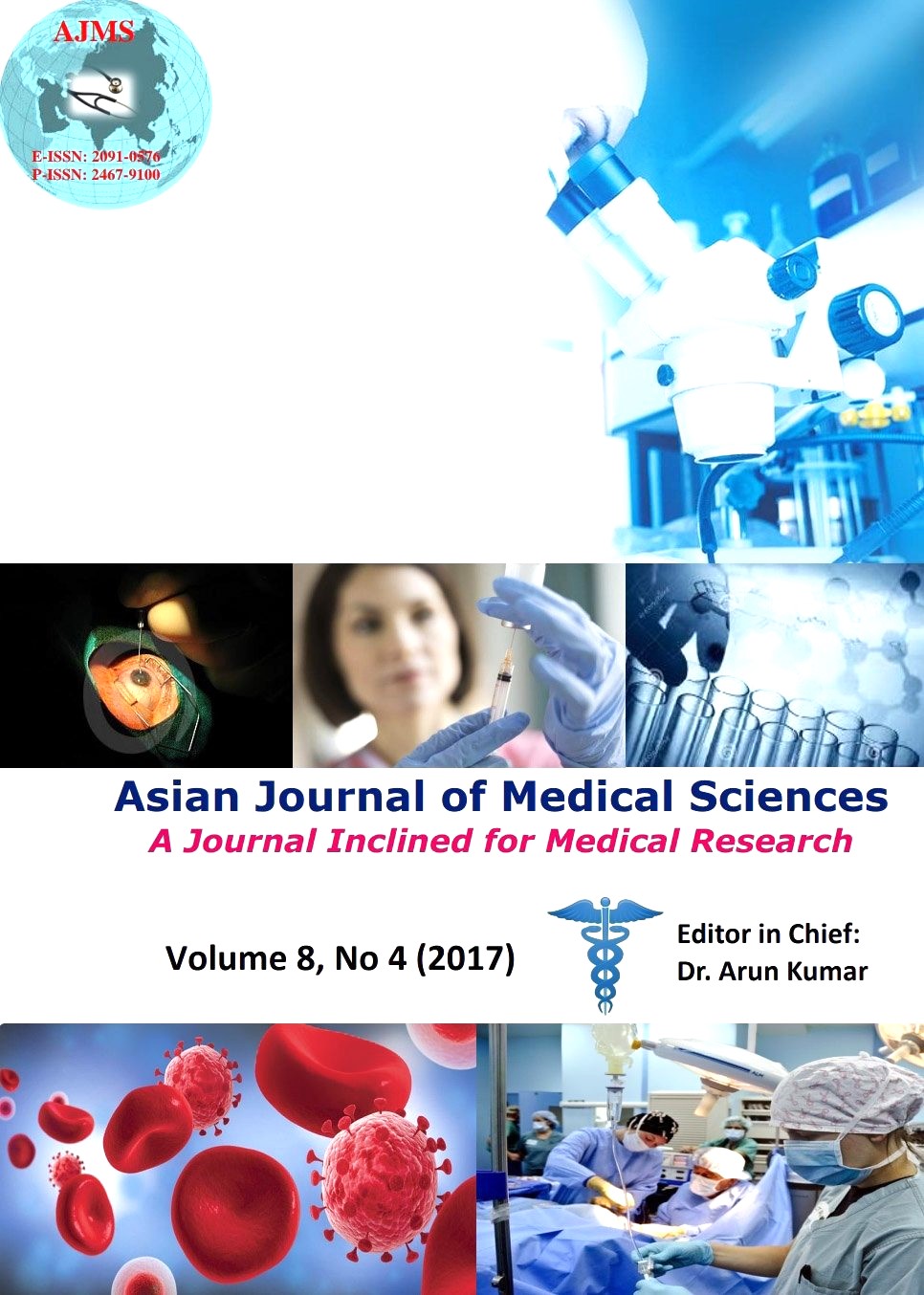A study of clinical profile and management of dominant thyroid nodule in a tertiary care hospital of West Bengal
Keywords:
Dominant thyroid nodule, Incidence of thyroid nodule in female, Role of radiology and FNAC in evaluation and management of thyroid noduleAbstract
Background: A dominant thyroid nodule (swelling) is a discrete swelling in a gland with clinical evidence of generalized abnormality in the form of palpable contra-lateral lobe or generalized mild nodularity. About 30% of thyroid nodules are dominant. The important aspect in evaluation of dominant thyroid nodule is to exclude malignancy.
Aims and Objectives: 1) to determine incidence of dominant thyroid nodule in relation with age and sex. 2) to determine the functional status of thyroid in dominant nodule. 3) to determine role of FNAC to diagnose a case of dominant thyroid nodule 4) incidence of malignancy among dominant thyroid nodule cases.
Materials and Methods: All patients attending surgery OPD at BSMCH between the study periods of August 2013 to July 2016 with clinically and radiologically proven dominant thyroid nodule were included in this study. Patients with solitary or recurrent nodules were excluded.
Results: Total of 147 patients were included in his study, with 86% of them being female, mean age of presentation was 38.35 yrs, and commonest age group being 5th decade. Only one patient had secondary hyperthyroidism. FNAC reports reveled 79 % benign etiology, 16 % malignant etiology, 4% intermediate etiology, 1% suspicious to be malignant. Sensitivity of FNAC was 73.3%, and specificity 97.2% to diagnose malignant etiology. The frequency of malignancy was 21.1%.
Conclusion: Thyroid nodule is commonest presentation in various thyroid diseases mainly seen in females and in 5th decade and presents as thyroid cyst, colloid nodule, thyroid neoplasm, and thyroiditis. USG and FNAC has established role in evaluation of the nature of thyroid nodule and its management. Pressure symptoms requires surgery. Toxic nodules are mainly treated with antithyroid drugs, radioactive iodine and occasionally surgery, but malignant thyroid nodule mainly treated with total thyroidectomy.
Asian Journal of Medical Sciences Vol.8(4) 2017 11-15
Downloads
Downloads
Published
How to Cite
Issue
Section
License
Authors who publish with this journal agree to the following terms:
- The journal holds copyright and publishes the work under a Creative Commons CC-BY-NC license that permits use, distribution and reprduction in any medium, provided the original work is properly cited and is not used for commercial purposes. The journal should be recognised as the original publisher of this work.
- Authors are able to enter into separate, additional contractual arrangements for the non-exclusive distribution of the journal's published version of the work (e.g., post it to an institutional repository or publish it in a book), with an acknowledgement of its initial publication in this journal.
- Authors are permitted and encouraged to post their work online (e.g., in institutional repositories or on their website) prior to and during the submission process, as it can lead to productive exchanges, as well as earlier and greater citation of published work (See The Effect of Open Access).




